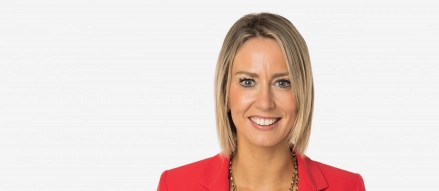
Auto-enrolment pension scheme approved
The auto-enrolment Bill will provide a pension scheme for eligible employees who currently do not have one, provided they earn more than €20,000 per year and fall between the ages of 23 and 60. Under this legislation, all employees not already enrolled in an occupational pension scheme (or equivalent) will be automatically enrolled. It is estimated that this scheme will apply to almost 800,000 workers and drawdown will be aligned to the State Pension.
Funding and contribution structure
The scheme will be co-funded by both employers and the state. Employee contributions will be matched by their employers, with an additional top-up from the State.
So, if an employee were to pay €3 into their pension pot, their employer must match their contribution and put in €3. At the same time, the State provides a €1 top-up, resulting in a total contribution of €7 for every €3 contributed by the employee. The state top-up contribution to the pension is designed to compensate for the lack of tax relief on employee contributions.
Employer and employee contributions will start at 1.5% of gross salary and gradually increase to the maximum contribution rate of 6% from year 10 onwards, as follows:
| Years from launch of system | Employer contribution p.a. | Employee contribution p.a. | Government Contribution p.a. | Total Contributions p.a. |
| 1 to 3 | 1.5% | 1.5% | 0.5% | 3.5% |
| 4 to 6 | 3.0% | 3.0% | 1.0% | 7.0% |
| 7 to 9 | 4.5% | 4.5% | 1.5% | 10.5% |
| 10 plus | 6.0% | 6.0% | 2% | 14.0% |
Opt-out provision
Employees may opt out of the scheme or suspend their contributions, but only after six months of mandatory participation. However, those who opt out or suspend contributions will be automatically re-enrolled after two years, after which they may opt-out or suspend again following a further six months of mandatory participation.
Implementation timeline and approach
Following this Cabinet approval, Oireachtas will approve the Bill when the Dáil returns after the Easter break. Commercial investment companies will then be invited to tender for the role of registered provider, responsible for investing contributions on behalf of auto-enrolment members. There will be up to four investment managers appointed and each manager must provide four fund types (conservative, moderate, higher risk and a default).
A new authority, the National Automatic Enrolment Retirement Savings Authority, will be established to collect contributions from employers and manage the system. Participants will have a choice of savings funds, including a default fund for those who do not wish to choose and alternative funds for those seeking a more active choice. Once the commercial investment companies and the Authority are in place, a clear employers communication strategy will need to be implemented by the government.
The current target commencement date for auto-enrolment is 1 January 2025, and it will be gradually phased in over the course of a decade from that date.
Accessing the pension
Retirement will be aligned to the state pension age of 66. Prevailing retirement options will be provided to members, including a tax-free lump sum and the option to purchase an annuity or invest in an Approved Retirement Fund Regime (ARF).
Implications for employers
The scheme will have financial implications for all employers, particularly in sectors such as hospitality and retail where rising operational costs are already a concern. We recommend that employers take advice and consider their options when choosing between the states auto-enrolment model and adapting existing plans while ensuring compliance with this new legislation.
Employers with existing pension plans in place will need to decide whether to open their plans up to all employees or instead allow employees opt for the state auto-enrolment scheme and consider the associated costs. They will also need to be prepared to advise employees on how the scheme will operate, including details on eligibility, rates and implications.
If you have any questions in relation to the above, or if you would like to discuss this topic further, please contact lead outsourcing and payroll partner, Hilary Larkin or any member of the payroll team.






